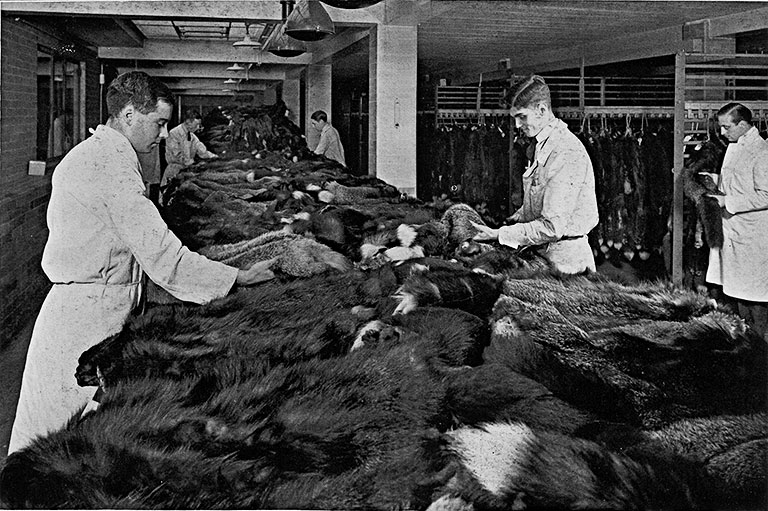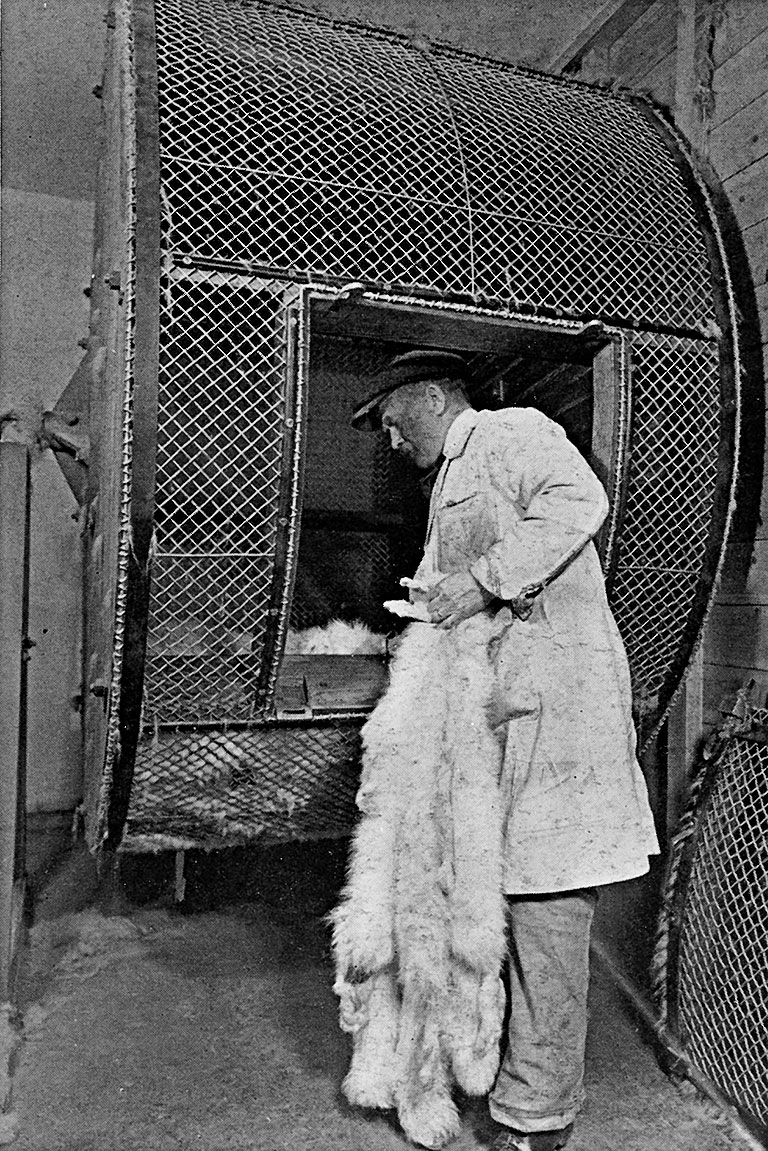Cool and Calculating

In the late 1800s, the Hudson’s Bay Company began to transition away from the fur trade and into retail sales. HBC outposts across the Northwest were turned into general stores that offered a host of supplies and items required by settlers as they flooded by the thousands into the region. Meanwhile, in larger towns and cities, a new shopping mecca arose — the department store.
Beginning in 1913, the HBC opened six flagship department stores in Western Canada: in Calgary, Edmonton, Victoria, Vancouver, Saskatoon, and Winnipeg. As the twentieth century continued, increasing numbers of shoppers began to think of the HBC as only a retailer; the fur trade, for centuries the heartbeat of the company, became a fading memory.
However, the HBC continued to sell furs for decades after the rise of retail. In the September 1935 issue of The Beaver, the magazine’s editors published a two-part photo essay that detailed the process of grading and then storing furs (along with other perishable items) for future sale.

The first part of the article, “The Experts,” explained the great care and expertise that went into properly inspecting furs and ranking their quality. The second part, “Cold Storage,” offered readers a behind-the-scenes look at the cold storage facility at Beaver House in London, England, where raw furs, along with frozen fish and other perishable items, were processed and stored.
The article, by an unnamed author, explained the extensive training process that went into developing skilled fur graders: “Fur graders are not made in a day, and each of the men grading in these photographs has worked his way up through four or five years of training to grading lowly muskrat, and, by slow stages according to his proficiency, he may advance from that to grading the mink and silver foxes that will find their way to the shops of Bond Street and Fifth Avenue.”
The author wrote with pride about the then-state-of-the-art refrigeration units housed within the cold-storage facility.
“In these storage rooms the temperature is kept so low that the men working there must wear blanket coats,” the article said, adding that the refrigeration units create “Arctic conditions in the heart of London.”


Themes associated with this article
Advertisement
You might also like...

Canada’s History Archive, featuring The Beaver, is now available for your browsing and searching pleasure!










